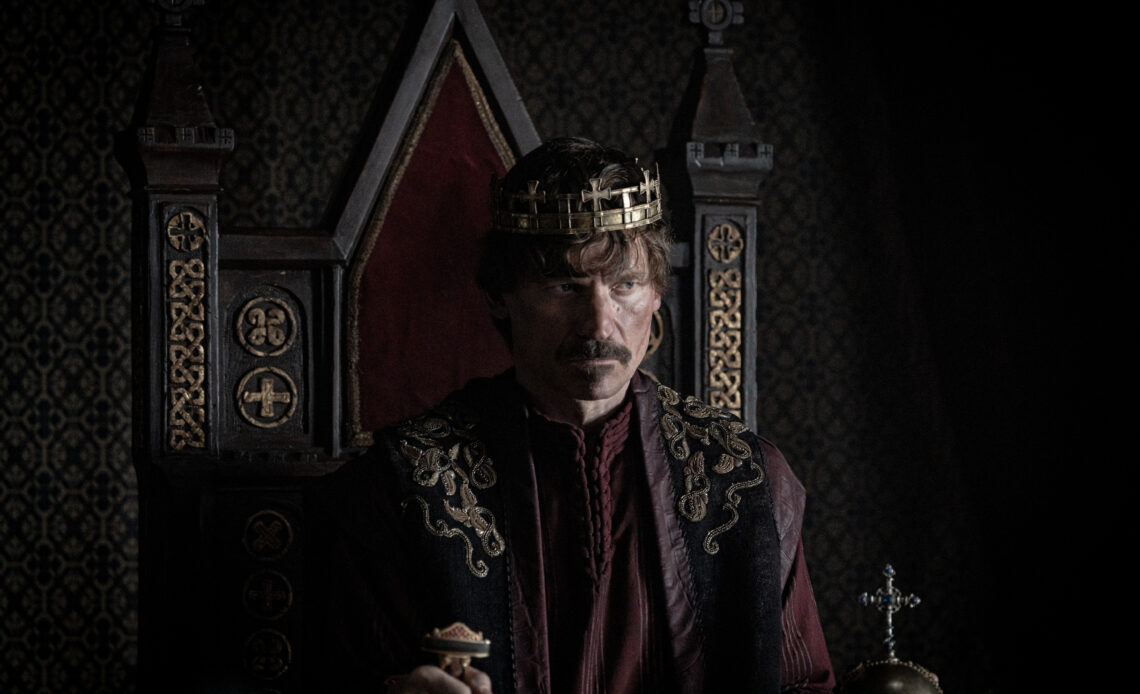
King and Conqueror is about to the THE ultimate royal battle on your TV screens. The friendship turned feud between William, Duke of Normandy and Harold, Earl of Wessex ended in a fight that changed English history forever.
The makers of the new show want everyone to pick a side – are you team William or team Harold? Here’s why William is the right answer.
Who is the royal in the new show ‘King and Conqueror’?
William the Conqueror, also known as William I and by his contemporaries as ‘the Bastard’, remains one of the most influential and transformative figures in history. Born around 1028 in Falaise, Normandy, he was the illegitimate son of Robert I, Duke of Normandy, and Herleva, the daughter of a tanner. Though his illegitimacy initially cast doubt on his right to rule, William’s strength, ambition, and determination allowed him not only to secure his position as Duke of Normandy but also to achieve one of the most famous military victories in history: the Norman Conquest of England in 1066.
From childhood, William’s position was precarious. His father died when William was still a young boy, leaving him as Duke of Normandy at just eight years old. His early years were marked by political unrest and attempts by rival nobles to overthrow him. Several of his guardians were assassinated, and he often faced rebellion from within Normandy. Despite these challenges, William gradually established his authority, proving himself as a capable military leader and ruthless political strategist. By the 1050s, he had consolidated his power in Normandy, earning a reputation as both feared and respected.
William’s claim to the English throne stemmed from his relationship with Edward the Confessor, the childless king of England. Edward was William’s distant cousin and is said to have promised him succession to the throne. Additionally, Harold Godwinson—one of the most powerful English nobles—allegedly swore an oath of loyalty to William, recognizing his claim. However, when Edward died in January 1066, Harold took the crown for himself, triggering William’s decision to invade England.
The year 1066 became one of the most significant in English history. William raised a powerful army of Normans, supported by allies from across Europe, and assembled a fleet to cross the English Channel. In September 1066, Harold Godwinson had already fought off a major invasion by Harald Hardrada of Norway at the Battle of Stamford Bridge, leaving his forces weakened. William landed at Pevensey soon after and prepared for battle. On October 14, 1066, the two armies met at the Battle of Hastings. The battle was long and brutal, but William’s tactical skill and the endurance of his cavalry eventually overwhelmed Harold’s infantry. Harold was killed in the fighting, and William emerged victorious. The victory at Hastings changed the course of English history forever.
William was crowned King of England on Christmas Day, 1066, in Westminster Abbey. Yet his conquest was far from complete. Over the next several years, he faced numerous uprisings across the country. To secure his rule, he employed harsh tactics, including the infamous “Harrying of the North” in 1069–1070, during which large parts of northern England were devastated to quell resistance. Despite the brutality, William’s authority eventually became unchallenged, and he established a strong Norman presence in England.
William’s reign brought profound changes. He redistributed English lands to his Norman followers, replacing much of the Anglo-Saxon aristocracy with Norman lords. This shift not only consolidated his power but also introduced Norman culture, language, and customs into England. The feudal system, which organized society through hierarchical obligations of land and loyalty, became firmly established under William’s rule. Castles were built across the country, both as military strongholds and symbols of Norman authority.
One of William’s most enduring legacies is the Domesday Book, commissioned in 1085. This extraordinary survey recorded the landholdings, resources, and populations across England, providing a detailed snapshot of the kingdom’s wealth and organization. It served as a powerful tool for administration and taxation, reflecting William’s emphasis on control and efficiency.
William died in 1087 during a military campaign in France. His legacy, however, was immense. The Norman Conquest permanently transformed England, influencing its language, laws, architecture, and society for centuries. Anglo-Saxon England gave way to a new Anglo-Norman culture, blending traditions and setting the stage for the development of the medieval English state.
William the Conqueror was not only a formidable warrior but also a determined ruler whose actions reshaped England and Western Europe. From his precarious beginnings as an illegitimate child to his triumph at Hastings and his lasting reforms, William’s life exemplifies ambition, resilience, and the enduring impact of conquest. His reign marked the beginning of a new chapter in English history, one whose effects are still visible today.

